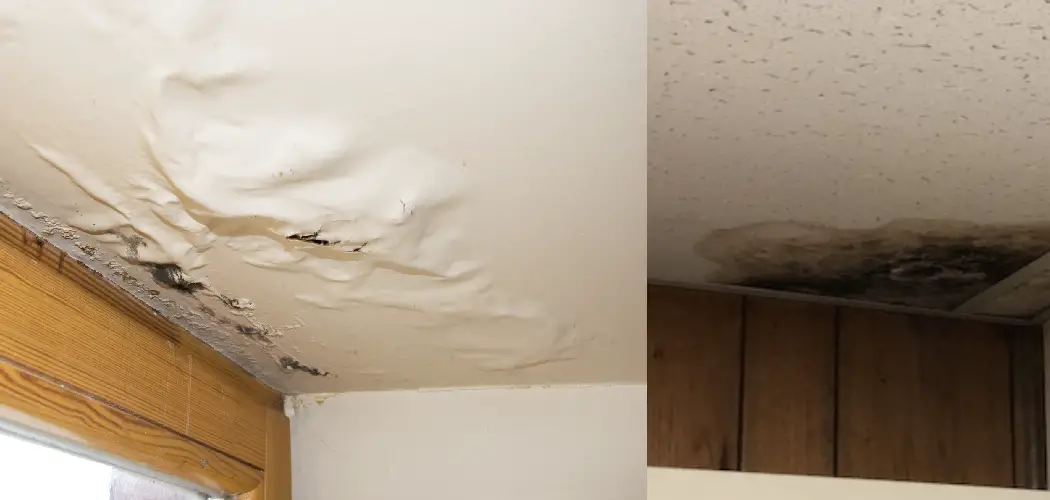Is water pooling in your basement ceiling? If you’ve noticed a recent uptick in humidity levels or can visibly see droplets of water, then it’s time to investigate the source of the leak.
In this blog post, we will provide an easy-to-follow step-by-step guide on how to find source of water leak in basement ceiling.
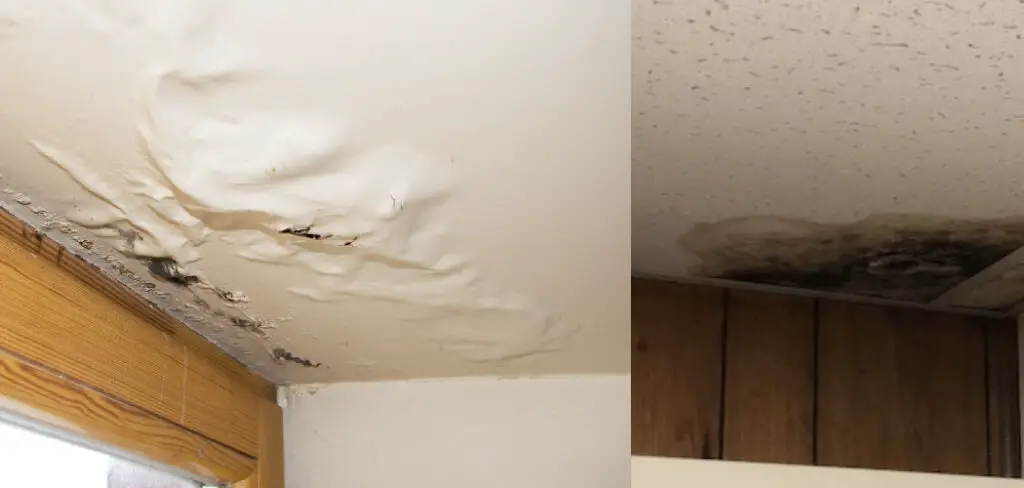
Whether you are dealing with old plumbing fixtures or a new mysterious issue is creating havoc in your home’s interior, our tips for pinpointing the source of the water leak will bring clarity to this tedious process. So grab some basic tools, gear up mentally, and let’s begin!
Step by Step Guidelines on How to Find Source of Water Leak in Basement Ceiling
Step 1: Locate the Source of the Water
The best place to begin is by getting down and dirty. Start your investigation by visually inspecting the area directly below where you noticed water pooling in your basement ceiling. Very often the source of the leak will be coming from a pipe or plumbing fixture, so having a flashlight handy is highly recommended for this process.
Step 2: Check Your Plumbing Fixtures
If you’ve noticed a slow, consistent drip coming from a plumbing fixture such as a sink or toilet, it’s time to get working. Be sure to check the seals on any exposed pipes underneath the fixtures and look for signs of corrosion or water damage around the base of your sink or toilet. If you don’t notice anything unusual, move on to the next step.
Step 3: Look for Cracked Pipes or Connections
If you haven’t noticed any signs of water damage near your plumbing fixtures, then it could be an issue with one of the pipes leading up to your basement ceiling. Make sure to pay special attention to pipes that are exposed as these may be more prone to developing leaks. If you notice any cracked, corroded, or damaged-looking pipes, chances are these are the source of your water leak.
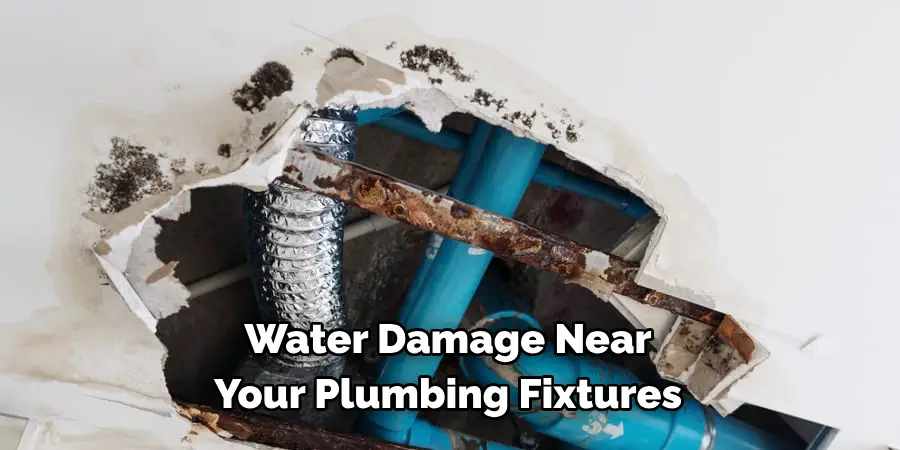
Step 4: Trace Your Water Pipes to See if There is an Issue
If all else fails, it’s time to get your hands dirty and start tracing the path of your water pipes. Look for any signs of water damage or corrosion along the piping leading up to your basement ceiling. If you don’t notice anything unusual here, move on to the next step. Sometimes it’s necessary to remove certain sections of drywall or insulation in order to better trace the water pipes, but be sure to wear proper safety equipment when dealing with these materials.
Step 5: Call a Professional
If you are still unable to locate the source of the leak, it may be time to call in a professional plumber. A certified plumbing expert will be able to use specialized tools and techniques to locate the source of your leak without damaging your home’s structure.
We hope you found this blog post helpful in aiding your investigation into how to find the source of the water leak in the basement ceiling. With these simple steps, you can quickly identify where the issue is coming from and take appropriate action. Good luck!
Additional Tips and Tricks to Find Source of Water Leak in Basement Ceiling
1. Check for loose pipes in the basement ceiling or walls. Look for wet spots, corrosion, and discoloration that could be indicative of a water leak.
2. Use a flashlight to check under the basement floorboards and around any existing plumbing fixtures for signs of moisture and damage.
3. If there is no visible sign of water damage, contact a professional plumber who can inspect your basement ceiling for signs of a hidden leak.
4. Consider using an infrared camera to detect water leaks in hard-to-reach areas of the basement ceiling. An infrared inspection tool will be able to pick up on damp and wet spots that may indicate the source of the water leak.
5. Look closely at the roof and gutters for any signs of damage or leaks. A damaged roof or overflowing gutters can cause water to enter the home through the basement ceiling, creating a water leak.
6. Make sure that all windows in the area are properly sealed and caulked to prevent moisture from seeping into your basement ceiling.
7. Check for any cracks or gaps in the walls and ceiling of the basement. If any are found, seal them with a waterproofing material to prevent moisture from entering your home.
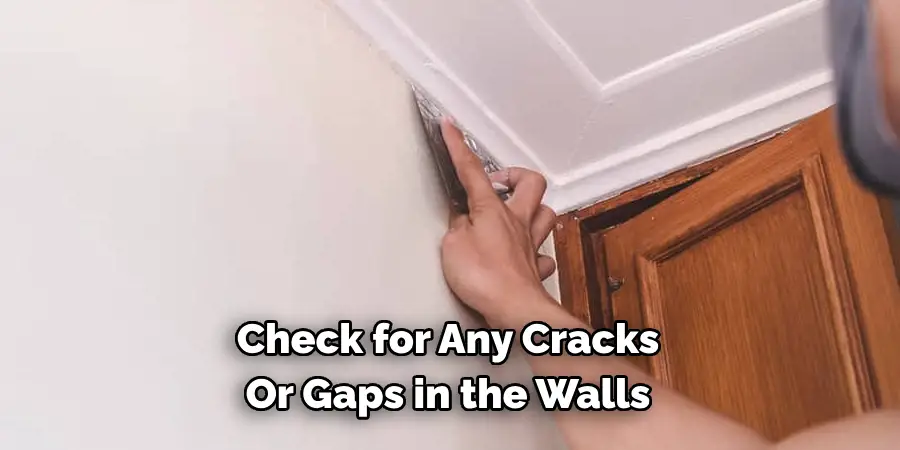
8. Keep an eye out for discoloration on the basement walls and ceiling which may indicate water damage, as well as flaking paint or wall coverings that could be indicative of water buildup over time.
By following these tips and tricks, you should be able to find the source of a water leak in your basement ceiling quickly and easily. Remember to always contact a professional plumber for any serious plumbing issues. With proper care and maintenance, you can prevent or minimize future water damage in your home.
How Can I Fix My Water Leak on Basement Ceiling?
Once you have identified the source of the water leak, it is time to start fixing it. The best way to go about this is to first shut off the power and water supply leading to the basement. Once done, locate a suitable patching material depending on the surface (drywall or plaster) and the size of the hole causing the leak. Apply the patching material to the damaged area and press it firmly into place with a putty knife or trowel. Once dry, sand down any excess material and then use either plaster or joint compound to fill in any gaps.
Once you are satisfied that the repair is secure, turn on the power and water supply again and check for any further signs of leaking. If all looks good, you can move on to the finishing touches. Paint or wallpaper over the patched area to complete your repair job and make sure that any further water damage does not occur. With a little bit of effort, you should be able to restore your basement ceiling back to its former glory.
Finally, take some time after the leak has been fixed to prevent future leaks from occurring. Make sure that your gutters are in good condition and are directing rainwater away from the house. Check outside hoses for any holes or cracks and replace them if necessary.
Regularly inspect the roof, walls, and foundation for any signs of damage that could cause water to seep in. Finally, regular maintenance of the plumbing system can help reduce the chances of a future water leak. Following all these steps should help keep your basement dry and free of water leaks for many years to come.
By taking the time to locate and repair a water leak in your basement ceiling, you can save yourself from further damage or even costly renovation bills in the future. With a few simple tools and materials, you should be able to get the job done quickly and efficiently. So, take the time to inspect your basement ceiling for signs of a water leak and get it fixed as soon as possible! Good luck!
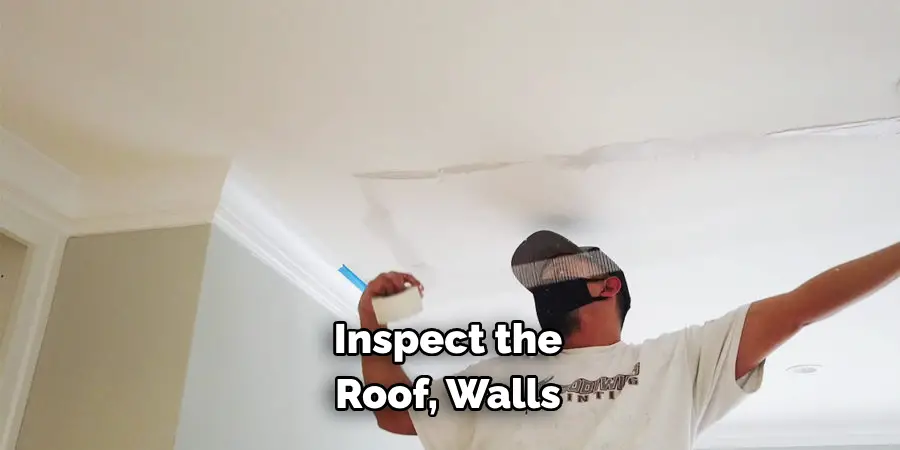
Frequently Asked Questions
How Much Should I Expect to Spend on Repairing a Water Leak in My Basement Ceiling?
The amount you will have to pay for repairs will depend on the size of the leak and the materials needed. A small hole may require only patching material, while larger holes or cracks may need joint compound or plaster and possibly even replacement drywall. The cost of materials will depend on the type you choose and the quantity needed.
Can I Repair a Water Leak in My Basement Ceiling Myself?
Yes, with some patience and basic DIY skills, most homeowners should be able to patch a water leak in their basement ceiling themselves. Just make sure to turn off any power and water supply leading to the basement before beginning. It is also a good idea to check with your local building code to see if there are any safety regulations you need to follow.
Are There Any Safety Precautions I Should Take When Repairing a Water Leak in My Basement Ceiling?
Yes, as with any repair project, safety should always be your first priority. Make sure to wear gloves and safety goggles when handling sharp objects or hazardous materials like joint compound or plaster. Never attempt to repair a water leak while standing in the basement as this may lead to electrocution if you come in contact with a live wire. Additionally, always use caution when working around ladders and other tools to prevent any accidents. Finally, it is important to always follow the manufacturer’s instructions when using any tools or materials.

Conclusion
All in all, knowing how to find source of water leak in basement ceiling and repairing it yourself can save you a lot of money in the long run.
With a little patience, basic DIY skills, and safety precautions anyone should be able to take care of this issue quickly and efficiently. So don’t hesitate, to take the time to inspect your basement ceiling for signs of a water leak so that you can get it fixed up as soon as possible! Good luck!

